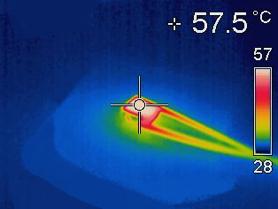Heat dissipation
Self-heating, i.e. heat generation within the piezoelectric actuator due to electrical and mechanical losses, is a major concern for high frequency applications. Properties (capacitance, stroke, etc.) will evolve with temperature, with the risk of unstable performance, increase stress and even degradation of the actuator.





